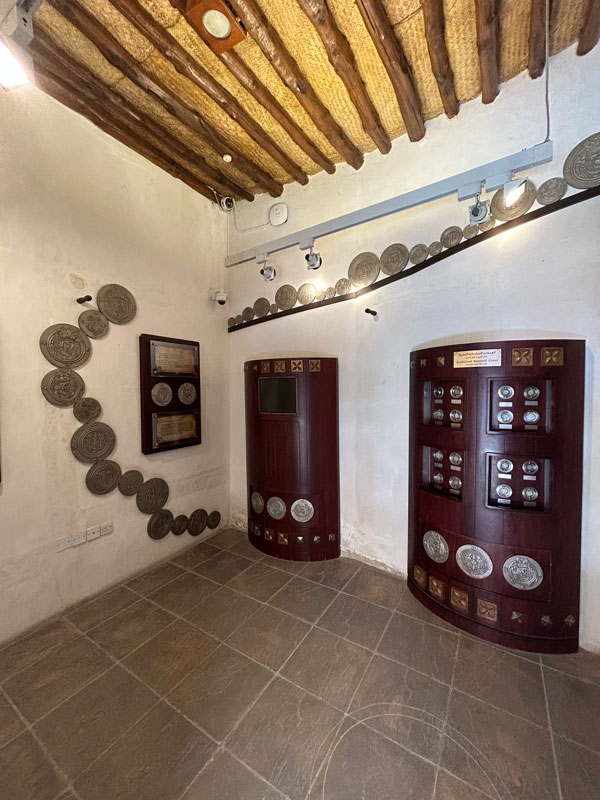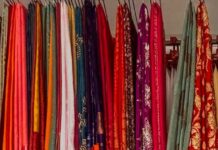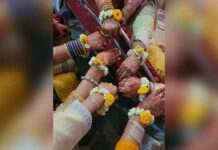By Salma Ghalwash
A timeless sanctuary in the modern city of Dubai, the Al Fahidi historical district charms the wandering traveler with its authenticity.
As you walk through maze-like alleyways and shadowed green courtyards, you will find yourself immersed in the architectural motifs of the neighborhood. Ochre-colored buildings made of palm wood, coral and gypsum blend into the desert landscape. Multiple tiny rooms dotted around the courtyards share the same oiled wooden doors.
Elegant barajeels, or high wind towers, are a characteristic element of Al Fahidi’s heritage. These barajeels let cool breezes flow into the buildings, providing ventilation to combat the harsh climate. Intricately carved mashrabiya (window screens) wrap the walls of the houses. Palm frond roofs branch over passageways to offer shade from the summer heat. Since the late 1800s, these old constructions have optimized the thermal situation of the village’s spaces.
The old neighborhood is part of a broader national initiative to preserve local heritage. Since 2022, Al Fahidi’s facilities and infrastructure have been undergoing rehabilitation.
For over a century, this neighborhood in Bur Dubai was a popular trading center for pearl and textile merchants due to its strategic location along the creek. Despite its renown today as a key attraction with many bussed-in tourists, the district still has the essence of solitary peace.

Adjacent to a wide pathway lined with large potted plants is al khayma, a tent made from knitted goat hair, ropes and wooden pillars. If you continue roaming by the tent, a falconer who frequents the district welcomes you with an endearing but fierce predator perched on his arm.
Behind tall greenery is a sand-colored wall with vibrant blue and green text, which writes, “Open doors, open minds.” This is the motto of the Sheikh Mohammed bin Rashid Al Maktoum Centre for Cultural Understanding, a non-profit organization that hosts meals, dhow rides and guided tours of Al Fahidi. Cultural speakers and volunteers at the center share insights on local culture and customs.
Scattered across the district, small museums display artifacts, antiques and rich histories. One of these museums is the Coins Museum, which documents early Arab, Emirati and Persian civilizations through currency.
The old neighborhood is part of a broader national initiative to preserve local heritage. Since 2022, Al Fahidi’s facilities and infrastructure have been undergoing rehabilitation.
While you stroll through an outdoor exhibit of boats, you’ll encounter the faint aroma of coffee, drawing you into the Coffee Museum. Coffee is an important part of Emirati culture. Located in a two-story traditional home on a narrow backstreet, the museum-café hybrid is a place to learn about, brew and savor the drink. Brass urns, ornate cups and ancient utensils are just some of the museum’s relics that demonstrate both the regional and global history of coffee.
The Bayt Al Khanyar Museum presents a collection of daggers, some dating back 80 years. These thin, curved, finely inscribed blades exemplify Emirati craftsmanship with belts woven from leather and embroidered with silver or gold threads.
Hidden in the heart of Dubai’s historic district, the XVA Art Hotel champions modern Middle Eastern art. Near this building, several quaint stores sell local handicrafts and artwork.
Follow the creek inland and you will find a waterfront promenade that merges the historical architecture of Al Fahidi with contemporary design. In Al Seef, eateries and shops are tucked into traditional home exteriors. In this visual facet, the area also diverges from the metallic murmurs of the metropolis.
Visiting the Al Fahidi historical district is an intriguing and informative experience. Residents and tourists alike can step into the past of Emirati culture, indulge in local cuisine and participate in various activities, reminding them of the rapidly evolving city’s soulful origins.


















